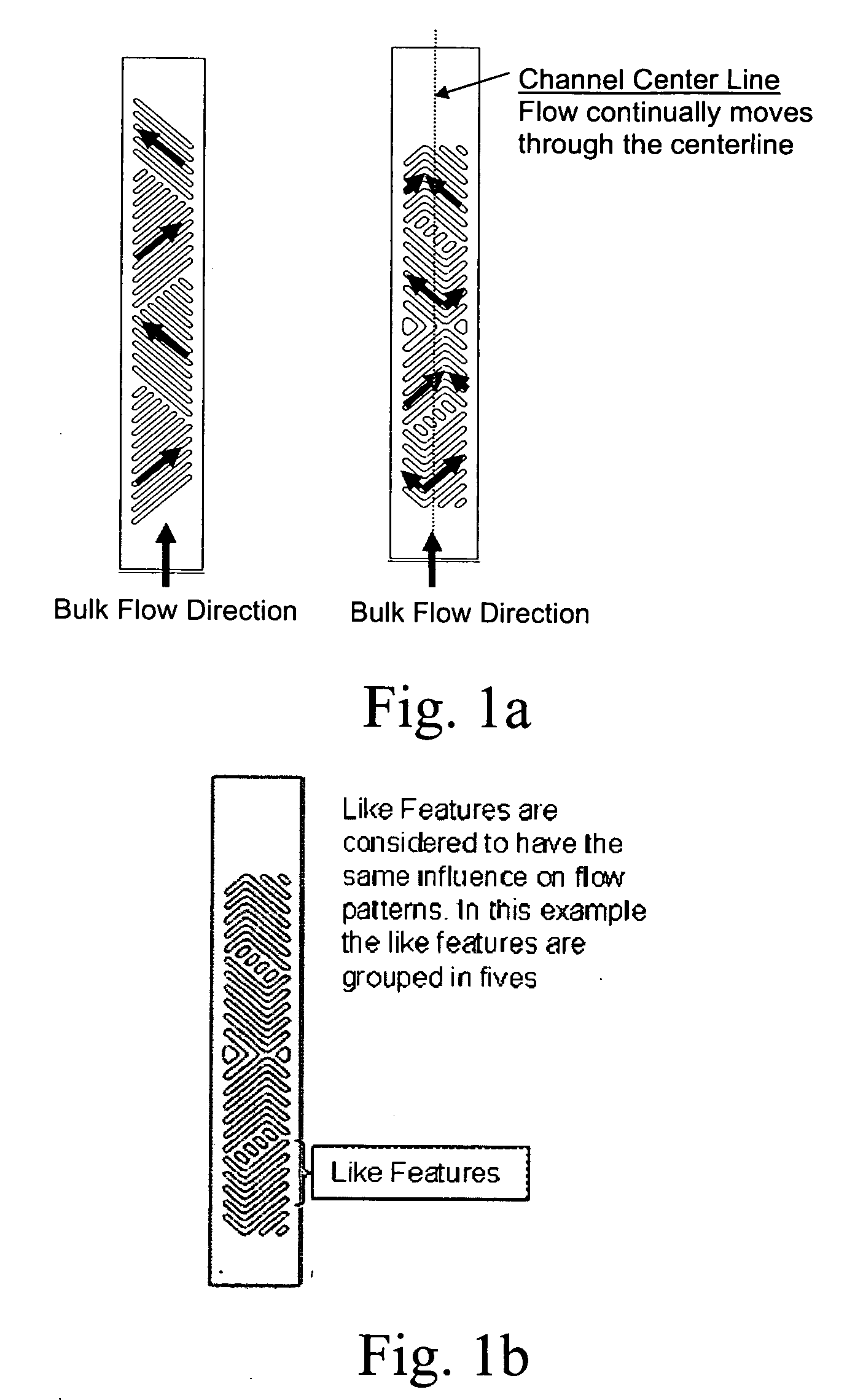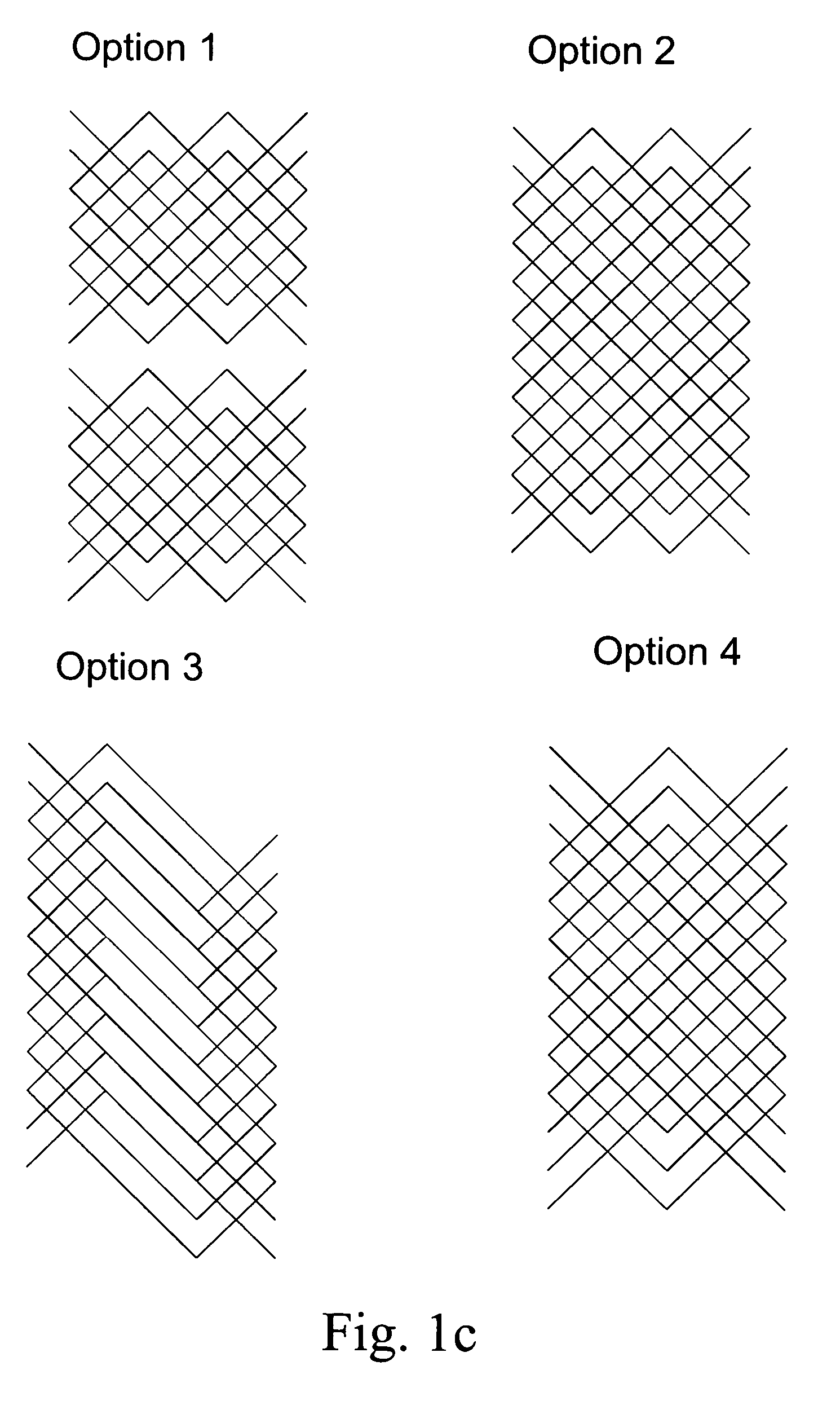Surface features in microprocess technology
a microprocessing and surface feature technology, applied in the field of microchannel apparatus, can solve the problem that the diffusion alone would likely be insufficient for the reacting molecules to hit the active catalyst wall, and achieve the effect of enhancing unit operation and performan
- Summary
- Abstract
- Description
- Claims
- Application Information
AI Technical Summary
Benefits of technology
Problems solved by technology
Method used
Image
Examples
examples
Steam Methane Reforming Reactions in Microreactors with Wall Surface Features
[0177] The effect of surface features on the reactor performance was explored for the methane steam reforming reaction. The intent of the features was to increase the conversion per length, especially at low catalyst activity. The surface features increase the available surface area for catalyst, they allow a solution derived catalyst to be washcoated uniformly, and they reduce external mass transport limitations in the bulk microchannel and thus allow the reactor to operate closer to the intrinsic potential of the catalyst activity.
[0178] In this example, the surface features have rectangular cross section shape; are on either one or both sides of the microchannel; the depth of the surface features are of the same order as the main flow channel gap; and the surface features are placed at a specified angle relative to the main flow direction
Part of the dimensions defining the problems are kept the same...
examples b and c
In examples B and C, mirror image surface features in terms of shape and orientation were present on opposite walls of the channel. In this example, grooves of type B are imposed on one wall, and grooves of type C are imposed on the opposite wall (opposing angles). This orientation is also referred to as a trans configuration. The plane of symmetry at the middle of the channel is lost.
[0201] The dominant flows within the surface features on the opposite walls point to opposite directions transverse-wise. On one side, the flow turns from the edge close to the center of the main flow channel to the farther edge. While on the opposite side, the flow turns from the edge farther away from the center of the main flow channel to the edge close to the center of the flow channel. These flow patterns within the surface grooves lead to no dominant transverse flow direction in the main flow channel. This is quite distinct from the presence of dominant flow directions in case B (the flow points ...
case 1
Inch Channel Gap
Using liquid water as the fluid:
Boundary Conditions [0236] Operating pressure=14.7 psi [0237] Outlet pressure=0 psig [0238] Inlet velocity=1.54 m / s [0239] Inlet temperature=300 K [0240] Wall temperature=350 K
The Reynolds number of the fluid in the channel was 1000. The Reynolds number was calculated as Re=ρ vDμ
where [0241]ρ=density of fluid, kg / m3 [0242] v=Velocity of fluid, m / s [0243] D=Hydraulic diameter of channel, m [0244]μ=Viscosity of fluid, kg / m / s
The overall heat transfer coefficient was estimated as HTCoverall=Q.wallAflat(LMTD)
where [0245] HTCoverall=Overall heat transfer coefficient (W / m2 / K) [0246] Qwall=Heat transferred from wall (W) [0247] Aflat=Heat transfer area based on smooth (or no surface feature) geometry, m2 [0248] LMTD=Log mean temperature difference
Model Chosen
K-Omega model (SST type) was chosen for CFD analysis. The values of model constants were default values provided by Fluent 6.0. Full multi-component diffusion species tran...
PUM
| Property | Measurement | Unit |
|---|---|---|
| length | aaaaa | aaaaa |
| contact time | aaaaa | aaaaa |
| Reynolds numbers | aaaaa | aaaaa |
Abstract
Description
Claims
Application Information
 Login to View More
Login to View More - R&D
- Intellectual Property
- Life Sciences
- Materials
- Tech Scout
- Unparalleled Data Quality
- Higher Quality Content
- 60% Fewer Hallucinations
Browse by: Latest US Patents, China's latest patents, Technical Efficacy Thesaurus, Application Domain, Technology Topic, Popular Technical Reports.
© 2025 PatSnap. All rights reserved.Legal|Privacy policy|Modern Slavery Act Transparency Statement|Sitemap|About US| Contact US: help@patsnap.com



